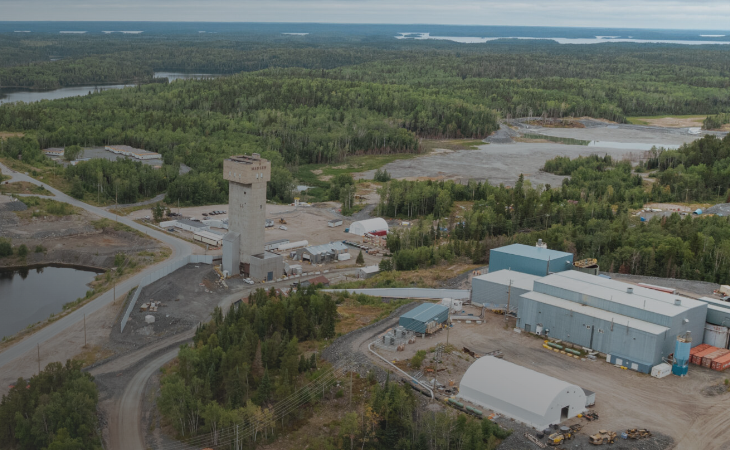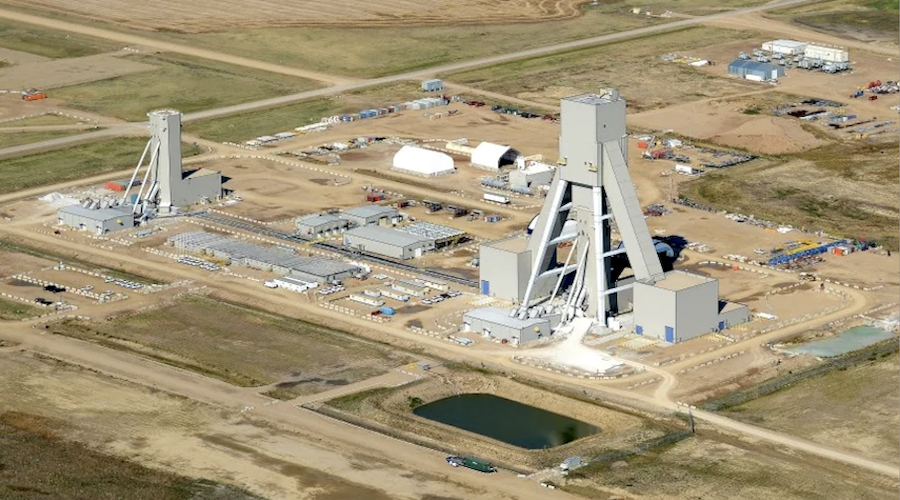VANCOUVER — In the grand scheme of things Canada isn’t known as a great power in the iron ore business, but a group of forward-thinking mining companies have come together with the Canadian National Railway to explore the possibility of igniting a true iron ore boom in the prolific Labrador Trough region on the Quebec-Labrador border.
The Labrador Trough is a 1,000-km-long belt stretching from Ungava Bay in northern Quebec through Labrador. It consists of a series of Proterozoic sedimentary rocks, including iron formation, volcanic rocks and mafic intrusions called the Kaniapiskau Supergroup, which is the primary source of iron ore.
CN Rail released a statement on Aug. 10 indicating it had secured support from a number of mining companies active in the area to proceed with a feasibility study aimed at building a rail line and ore handling terminal to serve iron ore operations.
The partnership includes CN Rail, Cliffs Natural Resources, Labrador Iron Mines, New Millenium Iron, Cap-Ex Ventures, and Alderon Iron Ore. Also on board is major pension fund La Caisse de dépôt et placement du Québec,
“[We] will work closely with mining companies in the group and the Caisse to determine the best design and right timing for the development of rail infrastructure to tap the significant iron ore production potential of the Labrador Trough in northern Quebec and Labrador,” commented CN president and CEO Claude Mongeau. “As North America's largest hauler of iron ore pellets, CN is well positioned to respond effectively to the needs of our customers in this market and to do so in a sustainable and economically viable way.”
The CN-led group will continue an infrastructure push in the region that was kick started when Canada's federal government pledged $55 million to the construction of a deep water, multi-user dock at Port of Sept-Iles — 650 km down river from Quebec City — which will feature two ship loaders and conveyor lines. The port upgrades are slated for completion by early 2014.
Quebec has acknowledged the importance of the Labrador Trough in recent budgets, citing three initiatives aimed at jump starting mining in the province. On top of the potential rail line, Hydro-Québec has undertaken a study to extend the provincial transmission grid, and Quebec has also pledged $1 billion in investment for new mining and natural resource projects.
The proposed rail line would run 800 km from the Gulf of St. Lawrence — north of Schefferville, QC — to the upgraded Port of Sept-Iles. Preliminary figures peg the cost of the project at roughly US$4.9 billion, which would likely be shared amongst the partnership. CN has been attempting to spearhead the project since the beginning of the year, but nearly shelved the plan in July when it cited a lack of support from regional miners.
The two active producers in the group are Cliffs Resources and Labrador Iron.
Cliffs operates its Bloom Lake iron ore mine in the southwestern corner of the Labrador Trough iron range, with an annual rated capacity of 8 million tonnes of magnetite and hematite ore. Cliffs owns 75% of the project along with Wugang Canada Resource Investments.
Labrador Iron owns a portfolio of 20 direct shipping iron ore deposits in the region — all within 50 km of Schefferville, QC — and kick started production at its 100%-owned James mine in June 2011. The company is Canada's newest iron ore producer, and is targeting the sale of 2 million tonnes of iron ore in 2012.
“The development of a new railway is of great interest Labrador Iron as it would provide options for long term rail capacity, with the potential to provide greater efficiencies and optimization of rail access,” commented president and chief operating officer Rod Cooper. “In addition, a new terminal handling facility at the Port of Sept-Iles would complement the planned development of the new multi-user dock at the Port, in which [we are] also participating.”
Alderon entered into a US$195 million partnership with China's leading steel producer, Hebei Iron & Steel Group, in late April. The companies are in the feasibility stage on the Kamistiatusset (Kami) iron ore project, which is expected to carry a US$989-million price tag. The project holds 490 million indicated tonnes grading 30% iron.
New Millienium is a 20% partner in a smaller scale, US$335 million iron development outside of Schefferville — called the DSO project — with majority Indian partner Tata Steel. The companies built a 200-person construction camp in August 2011, and expect to start up operations at a 4-million-tonne-per-year mine by late 2012. All iron ore output is expected to be bought by Tata’s European subsidiaries.
Cap-Ex is the earliest stage company in the region, with a focus on its Block 103 property. Cap-Ex's main target has been the Greenbrush zone, which is a near surface, interpreted iron ore mineralized area that runs over 26 km2 at an average grade of 30% iron. The company is finishing up a drill campaign in hopes of releasing a resource estimate by the end of 2012.
Montreal-based CN Rail told Bloomberg it planned to apply for the necessary railway permits from the Canadian Environmental Assessment Agency “within days”, though no timeframe was
To read more Northern Miner articles, click here





Comments